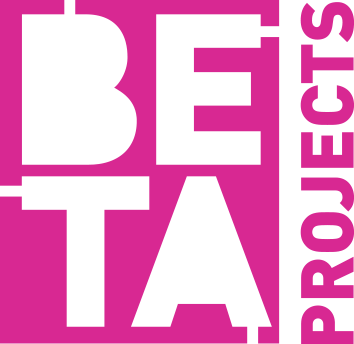Status: EXPLORING
Current Status: Exploring
Project Stage(s): Concept
Live Trial Location(s): Pending > Active > Removed
(What are the Project Stages?)
(Why are trials removed?)
CHALLENGE:
There are many times when it would be useful to open up streets to people on a part-time, regular or irregular, basis.
We receive many requests for such options, and here are some examples of potential types of uses:
- School Streets
- Market Streets (eg Dublin Flea when in Newmarket)
- Cicliovia (also sometimes called Sunday Streets)
- Play Streets
- Street Feasts
- Childrens' Birthday Parties in high-density areas of the city
- Placemaking trials.
- As a mechanism for trialling pedestrianisation (either part-time or full-time) of streets.
These all rely on the core condition of opening up a street to people walking and cycling, rather than the current main use of our streets which is the through-traffic of larger and heavier vehicles such as cars, vans, trucks and buses.
When they're regular, busy and give key visual cues to indicate that they're predominantly pedestrianised (eg the street is all at the same level), they tend to simply rely on legal signage. By their nature, there isn't much requirement for enforcement.
For example:
- Grafton Street and Henry Street are pedestrianised 11.00-06.00 (ie 19 out of 24 hours) and allow access for commercial deliveries outside of those hours.
But when they're irregular, quiet streets, or designed to clearly visually and physically separate into lanes (with a step in level between pavements and the carriageway), they tend to also require a physical obstruction to be placed into the roadway in order to both send a clear visual cue to anyone driving or cycling, but also to physically act as the enforcement to prevent anyone from doing so.
For example:
- Chesterfield Avenue in the Phoenix Park (at weekends only, and only for about 4 months of the year) places rigid bollards across the carriageway
- The pedestrianisation trial on Suffolk Street by the Grafton Street team (only for 6 weeks) used a planter box and flexi wand bollards.
PROPOSITION:
It would be useful to find a method that is simple to use, effective, and scalable. More likely, it will be the principle that will be scalable and we'll need a few different methods to suit different scenarios.
The below plan of a T-junction between two streets shows the principle.
- The red line is the legal aspect - it is the element that legally closes the street to traffic.
- Everything in blue is a belt-and-braces addition that then essentially simply becomes objects inside of a pedestrianised space.

A. Legal Traffic Boundary
- Legal traffic signage (eg 'No Entry', 'No Left Turn', 'Pedestrians Only' signage)
- Roadworks equipment (cones, bollards, dividers, etc)
B. Physical Obstruction
- Manual Bollard (eg removeable bollard, coffin bollard, etc)
- Automatic Bollard
- Chain / Belt
- Gate
- Sign (eg A-frame sign)
- 'Nice Object' (eg moveable planter box, bench, basketball hoop, etc)
Here are some examples from around the world - ranging from simple/informal to complex/formal.

(A Street Feast party using an informal sign.)

(A Temple Bar Company staff member dropping a removeable bollard in place.)

(A heavy planter and light bollards in use on Suffolk Street, Dublin.)

(A swing gate in France, which can be swung out to temporarily close a street to traffic. Thanks to Élodie for sending this onto us.)
(Automated bollards in Santiago de Compostela - opened via a fob card.)
Here are the required and preferred characteristics of this object:
- Easy to put in place, easy to remove.
- But not too easy to remove by the wrong people.
- Minimal lifting of heavy weights or awkward shapes.
- Won't have problems with bicycles locked onto it. (Preventing it from being moved.)
- Stays Put
- Eg not blown over in high winds, not damaged by rain or UV light.
- Not easy to be used for vandalism (eg thrown through a large shop window)
- Maintains Access/Egress as Needed
- Emergency Services
- Locals (as necessary)
- Commercial Deliveries (as necessary)
- Cycling (as necessary)
- Ability to Store On-Street
- This would help mutiple people be keyholders - to increase resilience.
- An alternative could be that there would be several 'copies' of the object - eg several bollards, or several signs.
- Minimises street clutter.
- Safe
- As its role is to act as physical barrier, there's a possiblity that a person driving (and breaking the law) could hit it. So it probably shouldn't invite much interaction (eg a bench or a basketball hoop are probably not suitable).
- Won't cause issues for people with disabilities (particularly sight issues).
- Robust
- Suitable for outdoor use
- Not easy to vandalise
- Useful for the Role
- Feels sufficiently 'official'
- Faciliates a message to be placed onto it.
- Suitable for the Location
- Feels suitably 'Civic' for use in a capital city
- Suitable for the type and width of the street
- Suitable for the relevant area of the city (for example, architectural conservation areas)
- Proportional technology
- For example, automated bollards might be suitable for streets which are opening up very regularly, or if there is a need for some form of all-day access by vehicles, or for locations with no 'Repsonsible Agent'. They probably do not make much sense on a suburban street that opens the odd time for a Street Feast.
- Low-tech, easily replaceable, solutions might best suit occasional, or low-traffic, Open Streets.
C. Reponsible Agent
- None...ie mechanical / automated solution.
- Dublin City Council staff
- Aligned organisation (eg Temple Bar Company, Dublin Town)
- Organisation / Business
- Resident
D. Storage of Physical Obstruction (directly linked to the option chosen for object B)
- In the Carriageway (eg coffin bollard, automatic bollard)
- Nearby, On-Street (eg swing gate, nearby storage 'sockets')
- Nearby, Off-Street (eg a local lock-up, local shop)
- Elsewhere, Off-Street (eg someone arrives with it in their truck, cargo-bike, etc)
E. Other Aspects (eg permissions, insurances, etc)
We'd like to discuss what might work best for each of these items A-E.
TRIAL DESCRIPTION:
In order to help us to dicuss this topic, we're hoping to trial the B-E aspects on Essex Street West in Temple Bar.

(Click to open in Street View - Essex Street West in Temple Bar West.)
It's already pedestrianised but permits commercial access 06.00-11.00, and so that enables us to take the above red 'item A' off the table, and just focus on the blue aspects B-E.
- People walk about 12,000 times through this street each day (11,000 during the week and 13,000 at weekends).
- About 800 vehicles pass through it on average per day, approximately equal between 4-wheeled vehicles and 2-wheeled vehicles.
- About 80% of all the vehicles pass through it during the pedestrianised hours.
- (You can see all of the raw vehicle count data here, and we will also make the pedestrian count data public at a later stage.)
Any trial would be fully reversed back to the current scenario following the trial period.
Item A - Legal Traffic Boundary
This aspect is already established (for over 10 years) - this street is pedestrianised for the majority of the day, and this has been the situation for over a decade, and will be unaffected by this trial. This is one of the reasons for choosing this street to start with - it enables us to take that aspect of the discussion off the table and focus on the remaining aspects that interest us.
Item B - The 'Physical Obstruction'
TBC
Item C - Responsible Agent
We'll be initially working with Temple Bar Company for this role. They already carry out a similar role in two other locations in Temple Bar.
Item D - Storage of Physical Obstruction
This may be resolved simply by our selection for item B.
Item E - Other Aspects
We will update this section as we learn more.
OUTCOMES:
[Trial not yet complete.]
DECISION:
[Trial not yet complete.]
NEXT STEPS:
[Trial not yet complete.]
RELATED PROJECTS:
WHAT DO YOU THINK?
Get involved in the conversation below.






Kevin Higgins, posted on 2018.07.15
Brilliant idea. Car free Sundays needed yesterday
Reply to this comment
J, posted on 2019.07.29
I love the new job on Essex Street. It does the trick. More of this please.
Reply to this comment
Eoin Brennan, posted on 2019.07.29
Just a short message to say I’m a massive fan of this idea, and would love to see it implemented as widely as possible. Dublin has the vibe of being very unfriendly to pedestrians in most places, with crowded footpaths in lots of places and a complete lack of public squares or even just pedestrianised streets. The more of these kind of ideas, the more friendly a city it becomes to spend time in rather than just moving through to get from place to place.
Reply to this comment
Élodie , posted on 2019.07.31
I’m so happy you’re looking into this! Such a wonderful progressive idea.
Have you though of the solution used by Florence for example? Cameras automatically recording unauthorized car plates passing through pedestrianized areas of the city center? Very discrete option. Very efficient.
I got a ticket ones for not paying attention to the signs! I didn’t do it twice, I’m telling you
Since you guys started this project, I have been noticing that I am walking through pedestrianized streets! But there are so many cars passing anyway that I hadn’t noticed so far… Liffey Street upper for instance. Trucks just go anyway, up to the plant pots. Which makes me think that big obstructions seem efficient. Signs much less as you noticed yourself. Cars don’t seem to attempt the sidewalks at least.
Dublin is the only city I know where cars don’t even stop at pedestrian crossing to let people cross for instance. So my feeling is that the whole driving mentality needs a bit of change, and that sadly, the fear of getting a fine might help?
I wonder what result you’re going to find. Please let us know!
Reply to this comment
Nick, posted on 2019.09.06
Keep it up guys. Dublin’s streets just grind you down whether you’re in a car or not - our only sustainable option is to rapidly and radically reduce private car use, and make way for the positive modes of transport (walking, cycling and mass transit, in that order).
Reply to this comment